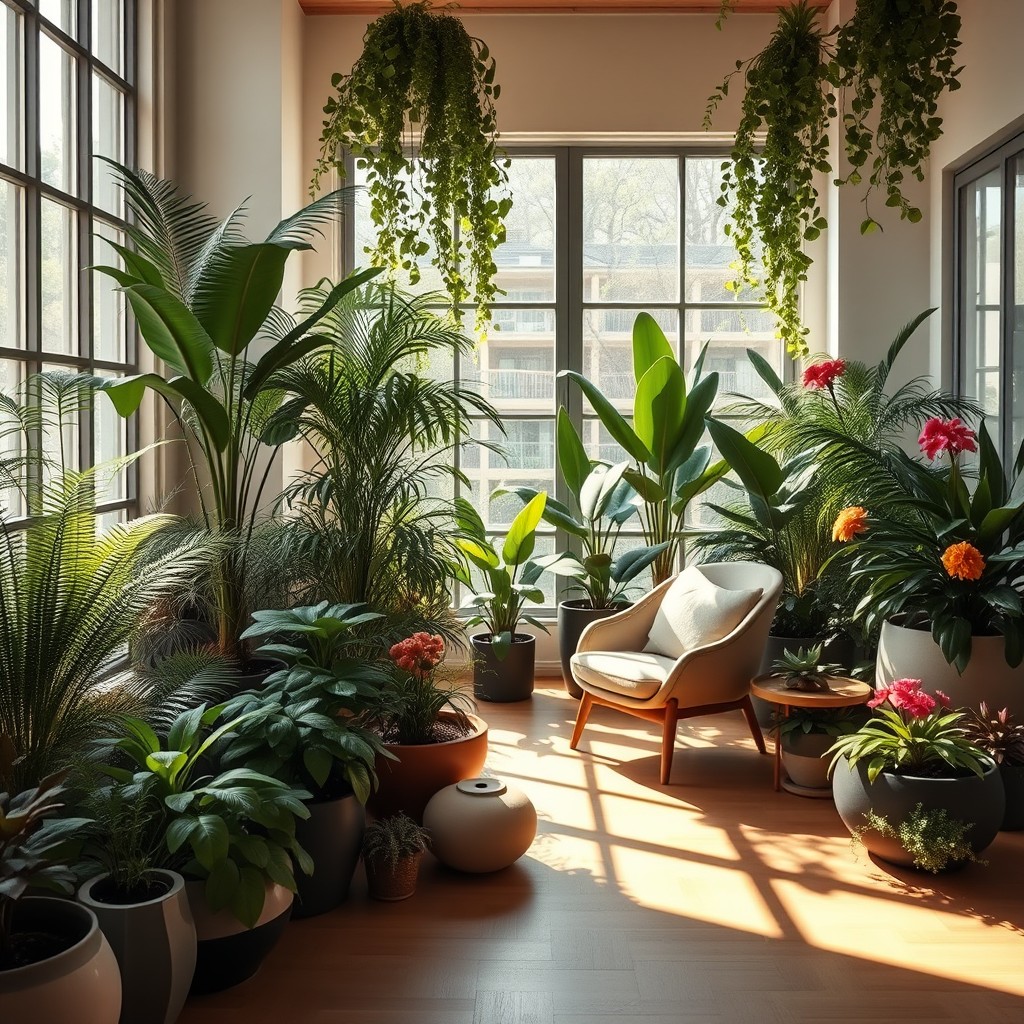
Creating an indoor garden is a wonderful way to bring nature inside, improve air quality, and enhance the aesthetics of your home. Best of all, you don’t need a green thumb or extensive gardening experience to get started. With a few easy steps and the right plants, you can create a beautiful indoor garden with minimal effort. Here’s how to do it.
1. Choose Low-Maintenance Plants
Go for Plants that Thrive Indoors
- Why It Works: Low-maintenance plants are perfect for indoor gardening because they require little attention and can thrive in various lighting conditions. Choose plants that don’t need constant watering or pruning, making it easy to maintain your indoor garden with minimal effort.
- Best Plants to Try:
- Snake Plant: Virtually indestructible and only needs watering every few weeks.
- Pothos: Grows in low light and is known for its air-purifying qualities.
- Succulents: Thrive in dry conditions and need little watering.
- Spider Plant: Tolerates neglect and thrives in indirect sunlight.
Tip: Place these plants in decorative pots to match your home’s aesthetic. You can even use recycled containers to upcycle items you already have.
2. Use Self-Watering Pots
Minimize Watering Hassles
- Why It Works: Self-watering pots are a great way to reduce the time and effort needed to maintain your indoor garden. These pots have a built-in water reservoir that automatically hydrates the plants, so you don’t have to worry about forgetting to water them.
- How to Do It: Invest in self-watering pots for your indoor plants, or create your own by repurposing plastic bottles or jars. Simply cut off the top half of a bottle, turn it upside down, and insert it into the bottom half, filling the bottom with water to provide a steady source of hydration.
Tip: Group plants with similar watering needs together in one area, so you don’t have to worry about over or under-watering different types of plants.
3. Maximize Vertical Space with Hanging Planters
Save Floor Space and Add Visual Interest
- Why It Works: Hanging planters are perfect for small spaces and add a unique visual element to your home. They allow you to create an indoor garden without taking up floor space, making them ideal for apartments or smaller rooms.
- How to Do It: Install hooks or curtain rods near windows to hang your planters. You can choose from macramé plant hangers, decorative baskets, or even DIY options made from old containers or fabrics.
Tip: Place trailing plants like pothos, ivy, or string of pearls in hanging planters to create a cascading effect, adding height and texture to your space.
4. Group Plants Together for a Lush Look
Create a Mini Indoor Jungle
- Why It Works: Grouping plants together not only looks more aesthetically pleasing but also helps create a humid microclimate, which many plants thrive in. A cluster of plants gives your indoor garden a lush, full look with minimal effort.
- How to Do It: Place different types of plants of varying heights and sizes in one area, such as a windowsill, shelf, or corner. Combine tall plants like fiddle leaf figs with smaller ones like succulents or herbs for a layered, dynamic look.
Tip: Use decorative trays or plant stands to elevate smaller plants and create more visual interest in your plant arrangement.
5. Use Plant Stands and Shelving
Keep Your Garden Organized and Stylish
- Why It Works: Plant stands and shelving allow you to display your indoor plants in a tidy, organized manner. They make it easy to care for your plants, give each one enough light, and add a stylish element to your indoor decor.
- How to Do It: Invest in tiered plant stands or floating shelves to display your plants vertically. This will help you maximize space, especially in small rooms, and give your indoor garden a more structured, intentional look.
Tip: Rotate your plants every few weeks so they get even light exposure, and rearrange them to keep your space feeling fresh and new.
6. Choose the Right Lighting
Ensure Your Plants Get the Light They Need
- Why It Works: Adequate lighting is crucial for the health of your indoor plants. While natural sunlight is best, some homes may not have enough of it. Luckily, there are many grow lights available that can supplement natural light and keep your plants thriving.
- How to Do It: Place your plants near windows that get plenty of sunlight, ideally in the morning. If your space lacks natural light, consider using LED grow lights to provide the right light spectrum for plant growth. You can set these lights on a timer to mimic natural day/night cycles.
Tip: For indirect light-loving plants, place them a few feet away from windows or in rooms with diffused light.
7. Opt for Decorative and Functional Plant Containers
Style Meets Functionality
- Why It Works: Using decorative containers can make your indoor garden a focal point in your home. Choose containers that complement your decor while also being functional in terms of drainage and plant health.
- How to Do It: Look for pots with built-in drainage holes to prevent overwatering. If your favorite pots don’t have drainage, simply place a layer of small stones or pebbles at the bottom to create a space for excess water to collect. Decorative cachepots (pots without drainage holes) can be used as outer covers for practical plant containers.
Tip: Mix and match different pot styles, colors, and textures to add variety to your indoor garden display.
8. Add a Few Low-Light Plants for Dim Areas
Greenery for Every Corner
- Why It Works: Not all rooms in your home will have ample sunlight, but that doesn’t mean you can’t add greenery. Some plants thrive in low-light conditions and can add life to dimly lit corners, bathrooms, or hallways.
- Best Low-Light Plants:
- ZZ Plant: Thrives in low light and can go weeks without water.
- Philodendron: Grows well in indirect or low light and requires minimal care.
- Ferns: Perfect for low-light bathrooms with higher humidity levels.
Tip: Rotate low-light plants occasionally to give them a bit of brighter light exposure, ensuring they continue to thrive in darker areas.
Conclusion
Creating a beautiful indoor garden with minimal effort is all about choosing the right plants, using smart tools like self-watering pots, and maximizing space with vertical displays. By incorporating low-maintenance plants, decorative containers, and proper lighting, you can enjoy the beauty of nature indoors with little time and upkeep required. Whether you’re a beginner or an experienced plant enthusiast, these tips will help you grow a lush, thriving indoor garden that elevates your home’s atmosphere.
ADVERTISEMENT


